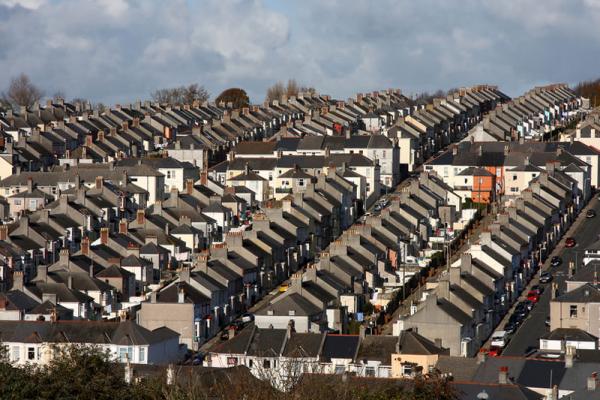GMB study show average house prices over 14 times average earnings in London

GMB study show average house prices over 14 times average earnings in London
The Labour Party is pledging to build one million homes with half of them council housing as these figures show that more council homes for rent in London are absolutely essential says GMB London
GMB members in London are desperate for the return of a Labour government to build new council housing as a new GMB study shows that they have been priced out of the housing market. In London average house prices are 14 times the average earnings of a full time worker living in the area.
A GMB study released today shows that workers on average earnings in London are priced out of the housing market in all 31 areas with available data, showing current average house prices in the area are between 9.7 and 25 times average earnings.
In London as a whole, the average house price in March 2017 was £471,742 which is 14 times the average full time earnings of £33,776. House prices are rising at a much faster pace than earnings with the house price to earnings ratio now 8.2 on average across the whole of England.
Average house prices in London increased by 1.5% in the year to March 2017.
The situation is most extreme in the City of Westminster where average house prices are 25 times average earnings, 21.8x in Camden, 19.9x in Hammersmith and Fulham, 18.4x in Haringey and 17.8x in Hackney.
A ratio of 4.5 times a borrower’s income is regarded as the maximum that banks and building societies will lend.
Set out in the table below are house price data and average earnings for all London boroughs ranked by areas with the highest ratio. See notes to editors for sources and definitions.
|
Average property price - March 2017 |
Median full time earnings - 2016 |
ratio |
||
|
England |
£232,530 |
28,503 |
8.2 |
|
|
London |
£471,742 |
33,776 |
14.0 |
|
|
1 |
City of Westminster |
£1,055,350 |
42,141 |
25.0 |
|
2 |
Camden |
£866,681 |
39,796 |
21.8 |
|
3 |
Hammersmith and Fulham |
£755,233 |
38,041 |
19.9 |
|
4 |
Haringey |
£571,511 |
31,063 |
18.4 |
|
5 |
Hackney |
£571,016 |
32,056 |
17.8 |
|
6 |
Islington |
£615,100 |
36,592 |
16.8 |
|
7 |
Barnet |
£554,735 |
33,443 |
16.6 |
|
8 |
Brent |
£482,538 |
29,812 |
16.2 |
|
9 |
Richmond upon Thames |
£675,435 |
42,076 |
16.1 |
|
10 |
Ealing |
£483,927 |
31,331 |
15.4 |
|
11 |
Lambeth |
£512,409 |
33,441 |
15.3 |
|
12 |
Merton |
£509,193 |
33,989 |
15.0 |
|
13 |
Southwark |
£495,327 |
33,864 |
14.6 |
|
14 |
Wandsworth |
£594,121 |
41,064 |
14.5 |
|
15 |
Harrow |
£473,019 |
33,202 |
14.2 |
|
16 |
Waltham Forest |
£432,759 |
30,859 |
14.0 |
|
17 |
Hounslow |
£406,976 |
31,001 |
13.1 |
|
18 |
Kingston upon Thames |
£488,416 |
37,979 |
12.9 |
|
19 |
Newham |
£353,300 |
27,942 |
12.6 |
|
20 |
Lewisham |
£414,721 |
33,157 |
12.5 |
|
21 |
Enfield |
£393,414 |
31,603 |
12.4 |
|
22 |
Hillingdon |
£415,716 |
33,508 |
12.4 |
|
23 |
Tower Hamlets |
£444,397 |
36,429 |
12.2 |
|
24 |
Redbridge |
£406,522 |
33,483 |
12.1 |
|
25 |
Bromley |
£433,008 |
37,682 |
11.5 |
|
26 |
Greenwich |
£368,451 |
32,415 |
11.4 |
|
27 |
Sutton |
£371,383 |
32,697 |
11.4 |
|
28 |
Croydon |
£367,160 |
32,696 |
11.2 |
|
29 |
Havering |
£362,983 |
33,398 |
10.9 |
|
30 |
Barking and Dagenham |
£277,508 |
27,886 |
10.0 |
|
31 |
Bexley |
£334,053 |
34,350 |
9.7 |
|
City of London |
£743,781 |
# |
# |
|
|
Kensington And Chelsea |
£1,406,839 |
# |
# |
Warren Kenny, GMB London Regional Secretary, said
“GMB London region analysis of average house prices to average earnings in London shows that the aspirations of working people on average earnings and below to own their own homes is no longer achievable.
“The Labour Party election manifesto pledges to build one million homes in the next Parliament with half of them council housing. These figures show that more council homes for rent in all council areas are absolutely essential.
“GMB is calling on the electorate in London to get behind their Labour Party candidates in the area to realise this manifesto commitment."
“We have been talking about this problem for far too long, there can be no excuses for not providing housing to people that they can afford to live in on average wages.”
ENDS
Contact: Gary Doolan on 07590 262 504, Richard O'Leary 07710 631347; Dave Powell 07710 631349 or Keith Williams 07710 631339
Notes to Editors
1) The Labour Party pledge a Secure Homes Guarantee stating ‘We will build over a million new homes in five years, with at least half a million council homes, through our public investment strategy. We will end insecurity for private renters by introducing rent controls, secure tenancies and a charter of private tenants’ rights, and increase access to affordable home ownership.”
2) Source: House price data from UK House Price Index for March 2017. UK HPI data published by Land Registry © Crown copyright 2017. The UK House Price Index (HPI) uses house sales data from the Land Registry and Registers of Scotland and is calculated by the Office for National Statistics.
3) Earnings data is from the Annual Survey of Hours and Earnings 2016, Office for National Statistics. Data is for gross median annual pay for all full time employees by place of residence.
4) GMB recognise that the house price to earnings ratio is only one measure of housing affordability. In practise, households seeking to buy a new property will possibly have 2 incomes and the lender will take that additional salary into account when working out affordability. However, the house price to earnings ratio can use data from the Annual Survey of Hours and Earnings which is more recent than other incomes data and the survey is much larger, enabling more robust analysis. A recent study by the Institute for Fiscal Studies shows that ‘the story has been broadly the same whether looking at the ratio of prices to family income or the ratio of prices to individual earnings.’


